2019 Green Globe Award winners
King County Executive Dow Constantine recognizes 13 businesses, cities, organizations and people for the work they’re doing to protect and improve the local environment. The Green Globe Awards are the County’s highest honor for local environmental efforts.
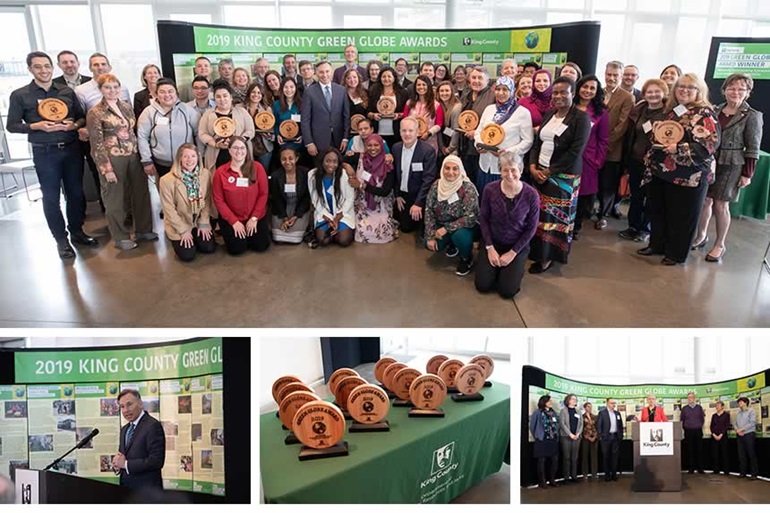

Environmental Catalyst Award
University of Washington
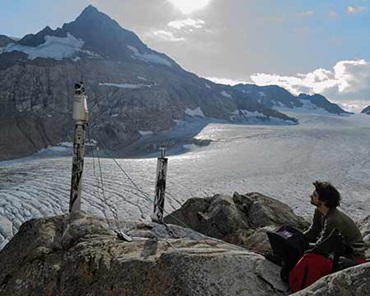
Imagine a world if…climate change is no longer a threat to the health, safety, and welfare of our communities; a world where bold action on clean, renewable energy and climate preparedness creates a sustainable and resilient future for all.
Climate change is one of the paramount challenges for our generation – and will be for generations to come. Successfully meeting this challenge requires bold action guided by strong science.
The University of Washington is a world—renowned leader in research on climate, climate change impacts, and responding to climate change. For more than 30 years, UW climate research has shaped our understanding of how rising greenhouse gas emissions affect human and natural systems. This includes groundbreaking science on the impacts of climate change on extreme events, global food security, human health, water resources, ocean acidification, sea level rise, and keystone species like our native salmon.
UW research has helped define why we need to move urgently on climate change. From research contributions to global—scale assessments, to local studies on the implications of climate change for decisions we make right here in the Puget Sound region, UW scientists have provided the technical foundation and engagement needed to chart a path towards a sustainable and climate resilient future.
UW’s growing portfolio of programs focused on climate change helps students gain the knowledge and experience needed to tackle this global crisis. King County benefits from the skills and knowledge that UW students and alumni bring to the County’s climate change efforts.
For example, a six—year partnership with King County Parks and the School of Environmental and Forest Sciences involves students participating in stewardship planning for Parks’ forestlands and conducting modeling to help enhance carbon sequestration and improve forest health.
Climate change is happening, but we can, and will, meet this challenge — and UW will be there every step of the way.
Outstanding Lifetime Contributions to Open Space Conservation
Gene Duvernoy
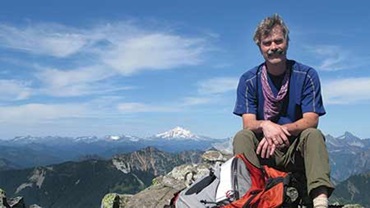
Imagine a world if…decades of foresight, creativity and unflinching commitment are contained in one passionate person results in protection for some of our best conservation and working resource lands; a world where talented people articulate a deeper understanding that our quality of life isn’t tied simply to protecting wild landscapes and open spaces, but also to working lands and urban green spaces, and to directing a seemingly inexorable march of growth and development to the right places.
These qualities and more are embodied in Gene Duvernoy, President Emeritus of Forterra and a giant in Puget Sound-area land preservation. Gene recently retired from Forterra, previously known as Cascade Land Conservancy, that he helped found three decades ago and has since secured more than 275,000 acres in 450-plus land transactions across the state.
Gene was instrumental in how the organization evolved, understanding the need to bridge the gap between public and private entities, to include working farms and forests, urban green spaces and community resiliency in its mission, and to cut across traditional boundaries and ideologies.
Gene has helped complete many of the region’s largest and most important open space and land conservation agreements, including the Wayne Golf Course, the former Maury Island gravel mine, Snoqualmie Forest, upper Green River Watershed, upper Raging River Watershed, and the former rail corridor that is now the East Lake Sammamish Trail.
Gene’s passion was sparked in part during his work managing King County's then-new Farmland Preservation Program in the 1980’s. Later, Gene was on point for the King County Council’s development of the $125 million open space bond issue, taking a leave of absence to the run the successful ballot measure, then returning to county employment to manage the office of open space.
And while Gene continues to build on his environmental legacy, already his efforts to protect our lands and communities will benefit Pacific Northwest residents forever.
Leader in Community Stewardship
Eastside Audubon Society
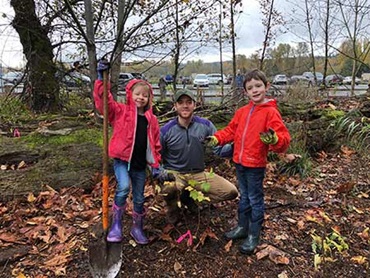
Imagine a world if…the norm was a culture of conservation; a world where diverse communities of volunteers came together to preserve and enhance natural areas for the benefit of birds, other wildlife and people.
Eastside Audubon Society has been active at King County’s Marymoor Park in Redmond for nearly 40 years. The organization started by conducting a bird survey to learn which birds could be found in the park, then building a bird checklist for the area.
With its location at the northern end of Lake Sammamish where the Sammamish River begins its short but slow run toward Lake Washington, Marymoor Park is a haven for birds and birdwatchers.
In 2006, Eastside Audubon partnered with King County Parks to take on stewardship of the Bird Loop Trail and adjacent natural areas within Marymoor Park. Soon after, Eastside Audubon enhanced the trail by adding a boardwalk and facilitating visitors’ educational experiences with interpretive signs and kiosks.
Today the Bird Loop Trail is an interpretive path winding through more than six distinct ecological communities within the park.
For the past 13 years, Eastside Audubon has led monthly volunteer service events to restore degraded habitat. These events provide opportunities for families, youth organizations, and others to experience nature through service. They also give students an opportunity to earn community service hours to fulfill school requirements – especially younger students who may find it difficult to volunteer elsewhere due to their age.
This past year, Eastside Audubon counted 234 volunteers at habitat restoration events, which incidentally is the exact same number of bird species counted in the park. These volunteers spent 691 hours removing seemingly endless amounts of invasive species, moving mountains of mulch, and planting over 1,200 native plants.
That was just in 2018. Imagine what Eastside Audubon Society and its volunteers will accomplish together in the future.
Leader in Green Stormwater Solutions
Young's Restaurant
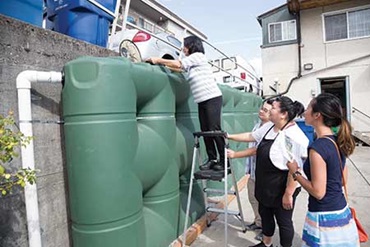
Imagine a world if… every business managed the rain falling on their roofs.
Young’s Restaurant became the first restaurant to participate in the RainWise program – a residential rebate program that incentivizes property owners to install green stormwater infrastructure. Young’s Restaurant is a Vietnamese—Chinese family—owned business serving the White Center community. Through support from ECOSS, a grassroots nonprofit organization, Young’s Restaurant installed three cisterns that collect stormwater runoff from the property and will keep more than 11,000 gallons of stormwater out of the combined sewer system each year.
The cisterns not only keep stormwater out of the wastewater system – which saves sewer capacity for the wastewater that really needs to be treated – but it also gives cistern owners access to a valuable resource – rainwater that is suitable for watering landscaping and other uses.
ECOSS has been delivering environmental solutions since the 1990s and now delivers services across Washington. Their language capacity and multicultural environmental outreach expertise were critical to the success of this project in White Center.
The RainWise program is a partnership between the King County Department of Natural Resources and Parks’ Wastewater Treatment Division and Seattle Public Utilities. The past few years, the program has implemented a “Big Roof” initiative to partner with community centers, places of worship, school districts, and other institutions to utilize green solutions to manage their stormwater. These projects engage institutions in stormwater management work, as well as build relationships with the local community.
With the new cistern capacity at Young’s Restaurant, RainWise now has more than 1,500 participants that collectively are channeling stormwater runoff from over 40 acres of impervious rooftops to green infrastructure facilities. Together, this partnership is keeping more than 20 million gallons of runoff out of the combined stormwater—sewer system every year – helping to control overflows into lakes, rivers, and Puget Sound during heavy rains.
Leader in Community Resiliency
World Relief Seattle
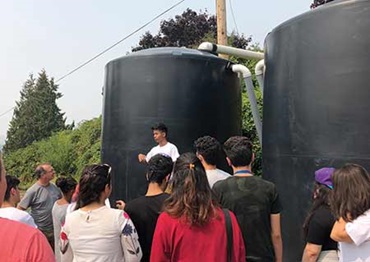
Imagine a world if… neglected urban spaces could be transformed into oases where refugees and immigrant families gather to grow culturally appropriate foods, play and learn together, building and stewarding a sustainable community.
World Relief Seattle envisions every refugee and vulnerable immigrant welcomed by community, rooted in community and empowered for community. This is often difficult for those who are landless. In response to this need, World Relief Seattle began designing and building Hillside Paradise Parking Plots – a unique refugee and immigrant community garden carved out of an unused parking lot at Hillside Church in Kent.
With funding support from King County, King Conservation District, The Nature Conservancy and the support of Construction for Change, a one—acre parking lot was replaced with 44 in—ground garden beds and six ADA—accessible garden plots.
It’s a living classroom for south King County school districts, and the people working in the garden represent 20 different countries.
This work removed more than 29,000 square feet of asphalt, restoring permeable ground where rainfall can soak into the ground. Speaking of rainfall, 80 percent of gardens’ irrigation needs are met with rainwater catchment through four cisterns that World Relief Seattle installed.
Stormwater from the area will be captured through five raingardens that are under construction and can filter and infiltrate more than 1.1 million gallons of stormwater annually.
Since 2017, World Relief Seattle has had help from more than 1,300 volunteers, and they plan to engage with more than 4,000 community members this year. Their work this year includes building a retention pond, engineered bioswale and an urban food forest through funding made possible by King County Flood Control District.
Just one acre has transformed an entire community and positively impacted an entire watershed. The world can be changed if our imaginations are big enough.
Leader in Environmental Advocacy
Paulina López, Duwamish River Cleanup Coalition
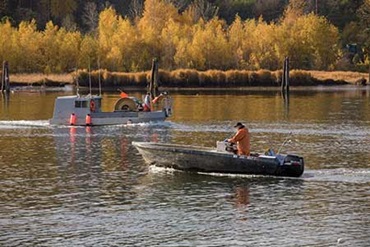
Imagine a world if…everyone practiced compassion and actions toward protecting people no matter the color of their skin or income level; where those voices that have been silent are encouraged to speak up and to make the decisions directly impacting them, elevating their potential and designing their own futures.
Paulina Lopez has partnered with King County on numerous environmental projects that help to include the Latino and South Park communities. She was quite literally the face and voice for safer cleaning products in a video series that was later adopted by local Latino nonprofits as a Train the Trainer series. Under her leadership, the Duwamish Valley Youth Corps participated in a Russell education grant to create and offer community workshops on stormwater.
Paulina has participated on projects with Public Health — Seattle & King County to investigate and engage communities in researching health indicators and green stormwater infrastructure projects. She has regularly participated in or supported audience research projects related to stormwater messaging.
Her willingness and support to act as a community convener, and her efforts to support ongoing environmental work in the Duwamish and South Park areas, and act as a connector with the Latino/X community, has provided invaluable entre into communities.
County projects have benefited from Paulina’s passion to build access to information and services and her commitment to engagement. King County’s ability to engage Latino communities would have been severely limited and superficial without her assistance and support.
Paulina Lopez embodies that rare person we hope to have engaged in our projects: A community connector who is a trusted advocate for their community and the environment. Her ability to rally all levels of community action and participation is recognized regionally.
She has earned this recognition for all she has done to shape projects supporting human and environmental health.
Leader in Access to the Outdoors
Wilderness Society
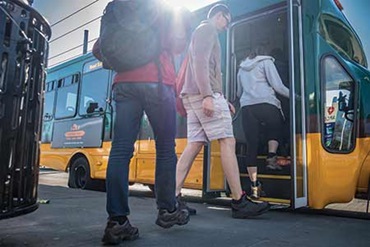
Imagine a world if . . . every community has safe and welcoming places for their residents to play and connect with nature so that everyone — especially the most—vulnerable populations — can share in the benefits of parks and open spaces close to home.
Founded in 1935, The Wilderness Society is the leading organization protecting our nation’s shared public lands. Their mission is simple, yet powerful and far—reaching: to protect wilderness and inspire Americans to care for our wild places.
The Wilderness Society is committed to the ideal that wilderness and all public lands can bring people and communities together and that everyone should share equitably in the benefits these places provide.
For more than three decades, The Wilderness Society has worked to protect the last great wild places of the Pacific Northwest. Today, the organization is working with communities from the crest of the Cascade Mountains to the heart of Seattle to break down barriers to accessing nearby public lands.
Rooted in a belief that public lands should be enjoyed by and available to all, The Wilderness Society’s newest initiative, Urban to Wild, works directly with communities in the greater Seattle area to identify challenges and advance smart solutions that increase access to the outdoors.
They are committed to working with partners to close gaps and address inequities in the region’s parks and open spaces, and facilitate connections to nature through creative transit and policy solutions.
One such example is Trailhead Direct – the transit—to—trails service offering access to some of the most popular hiking destinations in the region, including Cougar Mountain and other portions of the Issaquah Alps, as well as Mount Si and Mailbox Peak.
Their advocacy for programs, policies, and investments help to improve the health and well—being of local communities to ensure everyone can enjoy local parks, public lands, and the wilderness beyond.
Leader in Climate Justice
Mother Africa
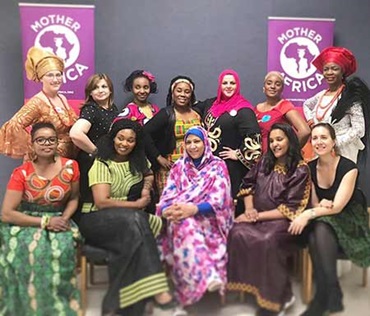
Imagine a world if…women from all nations had a voice to participate and engage with Mother Earth in a way that aligns with and expresses her culture, beliefs and life experiences; a world where communities develop in partnership with each other and there is equitable access to resources so everyone has what they need and cultivates resources for the next generation, in the traditions of their ancestors.
Mother Africa provides social and community advocacy services to African refugees, immigrant women and families. Their programs emerge from the needs of the community, meeting members where they are with resource referrals and direct support. They offer the community space to connect with peers, opportunities to celebrate successes, and much more.
One of King County’s first partners in the climate change communications transcreation project, the group tackled how to effectively co-create a climate change infographic in Arabic that would be culturally relevant for the intended communities.
Mother Africa is launching an “African Voices for Climate Justice” Initiative. Their worked with Front and Centered, the Salish Sea Collaborative, and King County Climate Action Team brings historically underrepresented communities of color into the climate justice conversation.
Mother Africa believes in crafting meaningful outreach and education materials that resonate with the diverse communities of King County. For example, the organization collaborated with community-based groups representing immigrant and refugee communities to trans-create communication materials on climate change and translate materials into the native language of each group.
Over a series of meetings, the team developed content and visuals that reflect the concerns and priorities of the community. The infographic was translated into Arabic, using focus groups in Arabic to gather input and to verify the content was clear and accurate. With the infographic now translated into Spanish and Arabic, the group will translate this essential information into Chinese and other languages.
Leader in Green Building
Miranda Redinger, City of Shoreline
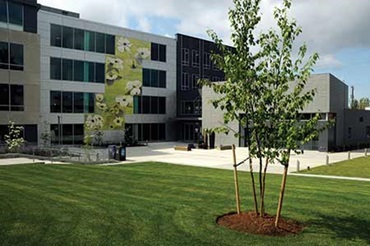
Imagine a world if…all buildings functioned like trees.
That was the concept Miranda Redinger was given as a student at the University of Virginia. Miranda’s professor at the time, William McDonough, was the Dean of the School of Architecture. He told Miranda that buildings could function like trees, and that there was a better way to design structures and cities.
Professor McDonough suggested the students consider changing the land use - transportation nexus to a more sustainable paradigm. This became Miranda’s life’s purpose.
Fast forward to present day. Miranda Redinger is a senior planner for the City of Shoreline - an active participant and leader in green building in partnership with King County’s Countywide Green Building Task Force since its inception in 2009.
The city has hosted GreenTools Roundtables and trainings for the past decade, and Miranda and other city staff are actively involved in the Regional Code Collaboration. Shoreline was one of the first cities to adopt the RCC green building code package and the city later led the charge in modeling a Deep Green incentive package for Built Green, Salmon Safe, LEED, Living Building and Passive House projects.
The first of its kind in the state, Shoreline’s Deep Green includes incentives for Salmon Safe and Passive House certifications, and since its inception the program has increased the number of Built Green residences in the city by more than 160 units since 2017.
Designing a program with these levels of resource reduction doesn’t happen overnight. Miranda worked with Built Green program manager Leah Missik to further opportunities for sustainable building in Shoreline in planning commission and city council hearings, on long phone calls, and during hours of policy research, outreach, and presentations.
For Miranda, it all goes back to Professor McDonough and his suggestion to his students that they consider the functions of trees when designing structures and cityscapes.
Leader in Open Space Conservation
City of Issaquah and Trust for Public Land
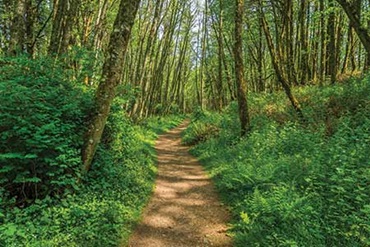
Imagine a world if…the norm was a culture of open space conservation, where creative regional partnerships save vital forests, farmlands, and rivers before it is too late from development and ensure easy access to green space for all King County residents.
The City of Issaquah and Trust for Public Land are helping bring such a world to reality. Working with King County, Trust for Public Land and the City of Issaquah demonstrated outstanding leadership in open space conservation with the recent acquisition of a lushly forested 46-acre undeveloped property on a Cougar Mountain hillside that is in the heart of the Mountains to Sound Greenway.
The stakes and price tag were high, as the unique Bergsma Property was proposed for housing development. Wedged between growing Issaquah neighborhoods and King County’s Cougar Mountain Regional Wildland Park – the largest park in the county system – the property’s rugged landscape is peppered with mature cedar and fir trees and provides habitat for the myriad of wildlife on Cougar Mountain.
Uniting under the banner of “Save Cougar Mountain,” a group of neighbors, environmentalists and open space and trail advocates successfully argued that rather than more development, the land should instead be protected as public open space for its value as habitat and passive recreation activities, such as hiking and wildlife watching.
Issaquah and Trust for Public Land boldly led the way, entering into a purchase agreement with the developer that closed in February.
Acquiring the property fits perfectly into King County’s Land Conservation Initiative, which seeks to preserve the highest quality remaining forestland, farmland and open space before it’s too late.
Thanks to the unflinching leadership of the City of Issaquah and The Trust for Public Land, this forested open space will provide a place to hike, relax, and enjoy nature close to home - for generations to come.
Leader in Salmon Recovery
Bellevue-Issaquah Chapter of Trout Unlimited
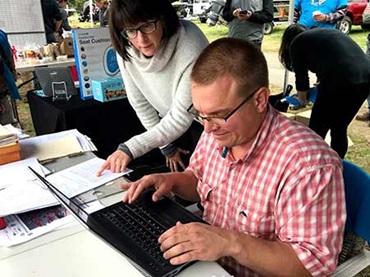
Imagine a world if…every individual, every group and every organization in our watershed felt strongly that it is vitally important to do everything possible to save our priceless heritage of natural resources… so we can proudly hand them to future generations… protected and intact…and that all salmon, including native and threatened Lake Sammamish kokanee salmon…can thrive in their natural environment…a living, breathing link to ancient times.
The Bellevue-Issaquah Chapter of Trout Unlimited is a founding and leading member of the Lake Sammamish Kokanee Work Group that was formed in 2007 to stop the decline and aid the recovery of the unique native Lake Sammamish kokanee salmon.
Their work has spanned the technical, political, and financial aspects of the ongoing restoration effort. For example, they have raised funds to support their own staff position focused on Lake Sammamish kokanee recovery, to conduct a feasibility study for restoring Laughing Jacobs Creek, and more.
Chapter members are active in on-the-ground work, including operating the fry traps in spawning creeks for the past decade, and conducting annual spawner surveys. And they performed the first surveys of anglers on Lake Sammamish in more than 30 years, yielding valuable data about the makeup of fish populations in the lake.
They have engaged the watershed community and raised awareness of the plight of the native kokanee population and ongoing recovery work. They have helped coordinate production of a documentary film on Lake Sammamish kokanee salmon that will be released in the very near future.
The fact that Lake Sammamish’s “Little Red Fish” stand a fighting chance of recovery is due in no small part to the remarkable commitment of Kokanee Work Group member organizations – and none are more committed to ensuring a bright future for these unique fish than the Bellevue-Issaquah Chapter of Trout Unlimited.
Leader in Waste to Resources
Full Container Recovery
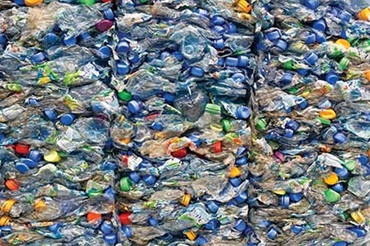
Imagine a world if, millions of pounds of food and beverage containers were diverted from landfills and re-purposed through a variety of methods creating partnerships between local businesses. Imagine a world where we not only reduce methane output but utilize it, and instead of wasting nutrients, extracting and returning them to the soil for future generations.
At Full Container Recovery, we're a locally owned and operated business in the Port of Tacoma for more than 20 years, and we strive to be a part of this solution and doing our part in a variety of ways. Since the inception of the company, we have strived to creatively and safely reduce waste, help our neighbors and local business partners by developing relationships and building bridges within the community that contribute to a more healthy and sustainable environment. FCR currently recycles daily, over 21,000 gallons of food grade beverages, food products and their by-products, including all forms of plastics, glass and aluminum. In addition, FCR partners with local farmers to convert through bio-remediation ethanol and methanol into animal feed, compost and even utilities that can be provided back to counties and their residents.
Full Container Recovery is proud of the work we do and the relationships we’ve built. We hope our framework and model provides a road map for future generations on how they can help look for new ways to eliminate food and beverage grade waste and find sustainable solutions.
Leader in Water Quality Solutions
Salmon-Safe and Clean Lake Union
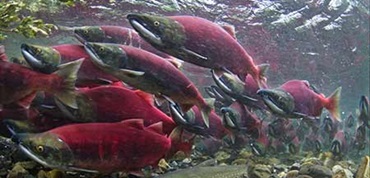
Imagine a world if…all the water was clean enough for salmon to thrive, orcas to live long lives and all humans were safe from pollution; a place where children can swim without fear of toxins in water that is so clean and clear it’s the color of turquoise ice.
For eight decades, polluted runoff from Seattle’s Aurora Bridge has impacted the health of migrating salmon and other aquatic species as it spills untreated into the Lake Washington Ship Canal. This contaminated stormwater flows through the Ballard Locks and into Puget Sound, where it affects more native fish and wildlife species, including imperiled orcas that depend on salmon as a primary food source.
This inspired environmentally innovative developer Mark Grey of Stephen Grey and Associates to join forces with Salmon Safe and convene a partnership to treat the stormwater runoff from the bridge through raingardens and bioswales on nearby land.
Salmon-Safe assessor and national stormwater expert Richard Horner, who has sampled runoff from highways across the nation for more than 40 years, said the Aurora Bridge stormwater was the most-contaminated runoff he’s ever tested.
Together with its partners, Salmon Safe is creating a blueprint for managing the 2 million gallons of stormwater that flow directly from the Aurora bridge into the ship canal between Lake Union and Puget Sound every year and, at the same time, supporting a pioneering model for public-private partnerships addressing contaminated stormwater and creating green infrastructure for public benefit.
Funded in part by Boeing, the Aurora Bridge project is led by non-profits Salmon-Safe and Clean Lake Union, that are committed to improving water quality in Puget Sound. Technical partners and design services are provided by KPFF and Weber Thompson, with outreach support from The Nature Conservancy of Washington.

 Translate
Translate